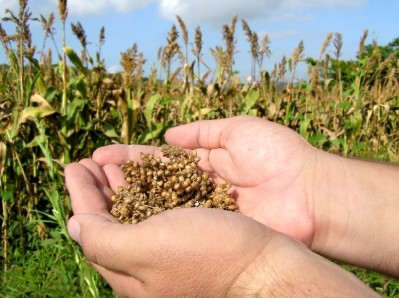Feed crop organizations applaud the end of potential cuts to crop insurance

The cuts had been included in the federal Bipartisan Budget Agreement of 2015, said members with the US House of Representatives Agriculture Committee in a release. But an agreement has been established to have the cuts removed.
The cuts remain listed in the budget agreement passed by the US House, said officials with the American Soybean Association (ASA), but members of the House and Senate Agriculture Committees have secured an agreement that they will be removed from an omnibus spending bill later in the year.
Some groups including the National Sorghum Producers said they were glad to see the change made.
“The work done in the last 48 hours to protect crop insurance, an essential farmer safety net element fought hard for through the 2014 Farm Bill process, is a true testament to the agriculture leaders we have representing farmers and ranchers across the United States,” said James Born, chairman of the National Sorghum Producers in a release.
The ASA is in a “trust but verify mode,” regarding the deal said Patrick Delaney, policy communications director.
Several organizations like the National Corn Growers Association (NCGA) had previously come out against the potential cuts, group officials said.
“This deal is yet another attempt to reopen the farm bill, despite major reforms and $23b in budget savings,” said Chip Bowling, NCGA president, at that time. “Agriculture remains the only industry that has voluntarily accepted spending reductions.”
Cut and deal details
Had the crop insurance cuts gone forward as planned, they would have removed about $3b from the insurance system over a period of 10 years, said Delaney. The rate of return for insurance companies would have dropped from 14% to about 8.9%.
“We’ve always tried to defend crop insurance from cuts,” he told FeedNavigator. A cut of this sort has yet to happen for the insurance system.
Farmers who use crop insurance deal with a volatile market and can be effected by unpredictable weather, Delaney said. Currently, farmers in the US could see a range of events from the wildfires in California, to dry or drought conditions in Texas and flooding in parts of North and South Carolina.
On a larger scale, the ASA doesn’t want to see the farm bill reopened, Delaney said. “We spent three years hashing out a farm bill that protects farmers and [let’s them] get back to farming after a bad year – we don’t want to open any of it, let alone one of the corner stones of the risk management,” he added.
Crop insurance protections
The idea behind the crop insurance program is that it helps farmers return to production after a bad year, said Delaney.
“The crop insurance subsidy doesn’t mean they get a check, it means they get a bill that isn’t as much,” he said. “Livestock, dairy, row crops – stuff is grown all over the country and we have almost every environment you can imagine, and you’re trying to grow foods in a lot of different places.”
The system is in place to account for years when something unexpected happens, he said. “This is a time that we need a stronger farm safety net, not a weaker one,” he added.










